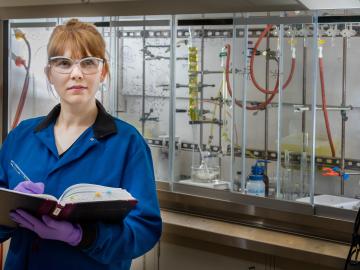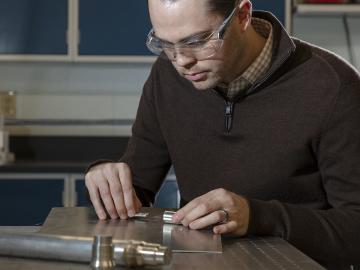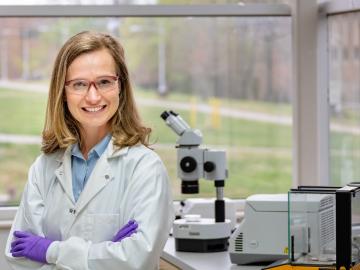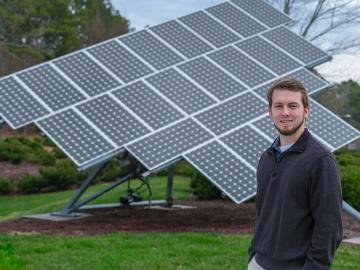
Filter News
Area of Research
- Advanced Manufacturing (1)
- Biological Systems (1)
- Biology and Environment (26)
- Clean Energy (33)
- Climate and Environmental Systems (1)
- Computational Biology (1)
- Computer Science (1)
- Fusion and Fission (7)
- Fusion Energy (1)
- Isotopes (7)
- Materials (16)
- Materials for Computing (4)
- National Security (4)
- Neutron Science (12)
- Nuclear Science and Technology (3)
- Quantum information Science (2)
- Supercomputing (23)
News Type
News Topics
- 3-D Printing/Advanced Manufacturing (9)
- Advanced Reactors (2)
- Artificial Intelligence (8)
- Big Data (3)
- Bioenergy (13)
- Biology (14)
- Biomedical (8)
- Biotechnology (4)
- Buildings (2)
- Chemical Sciences (2)
- Clean Water (5)
- Climate Change (3)
- Computer Science (25)
- Coronavirus (2)
- Cybersecurity (1)
- Decarbonization (3)
- Energy Storage (8)
- Environment (29)
- Exascale Computing (3)
- Frontier (1)
- Fusion (1)
- Grid (2)
- High-Performance Computing (9)
- Isotopes (6)
- ITER (1)
- Machine Learning (1)
- Materials (4)
- Materials Science (7)
- Mercury (4)
- Microscopy (3)
- Nanotechnology (4)
- National Security (4)
- Neutron Science (10)
- Nuclear Energy (9)
- Physics (3)
- Polymers (1)
- Quantum Computing (1)
- Quantum Science (6)
- Security (2)
- Space Exploration (2)
- Summit (8)
- Sustainable Energy (8)
- Transportation (9)
Media Contacts

In the shifting landscape of global manufacturing, American ingenuity is once again giving U.S companies an edge with radical productivity improvements as a result of advanced materials and robotic systems developed at the Department of Energy’s Manufacturing Demonstration Facility (MDF) at Oak Ridge National Laboratory.

An organic chemist at Oak Ridge National Laboratory, Santa Jansone-Popova focuses on the fundamental challenges of chemical separations that translate to world-changing solutions for clean water and sustainable energy.

With operating licenses for nearly all nuclear power plants set to expire in the 2030s and 40s—a pending loss that would affect a fifth of the country’s electricity supply—U.S. utilities will need to find a way to respond to what has been called the “nuclear cliff.”

Galigekere is principal investigator for the breakthrough work in fast, wireless charging of electric vehicles being performed at the National Transportation Research Center at Oak Ridge National Laboratory.

Amber McBride is using her expertise in nanotechnology, drug delivery, and disease models to research fundamental challenges in human health in the ORNL Biosciences Division.

Tempering, the heating process that gives chocolate its appealing sheen and creamy texture, is a crucial part of crafting quality chocolate. But, at the molecular level, it gets a little tricky, and when done incorrectly, can render entire batches of chocolate gritty and unappetizing.

Environmental conditions, lifestyle choices, chemical exposure, and foodborne and airborne pathogens are among the external factors that can cause disease. In contrast, internal genetic factors can be responsible for the onset and progression of diseases ranging from degenerative neurological disorders to some cancers.

While learning the ins and outs of utility operations as a part-time dispatcher during college, Ben Ollis coped with issues from storm-damaged power lines to transformer faults caused by snakes crawling into substation equipment

Scientists have demonstrated a new bio-inspired material for an eco-friendly and cost-effective approach to recovering uranium from seawater.

Researchers at the Department of Energy’s Oak Ridge National Laboratory, Pacific Northwest National Laboratory and Washington State University teamed up to investigate the complex dynamics of low-water liquids that challenge nuclear waste processing at federal cleanup sites.


